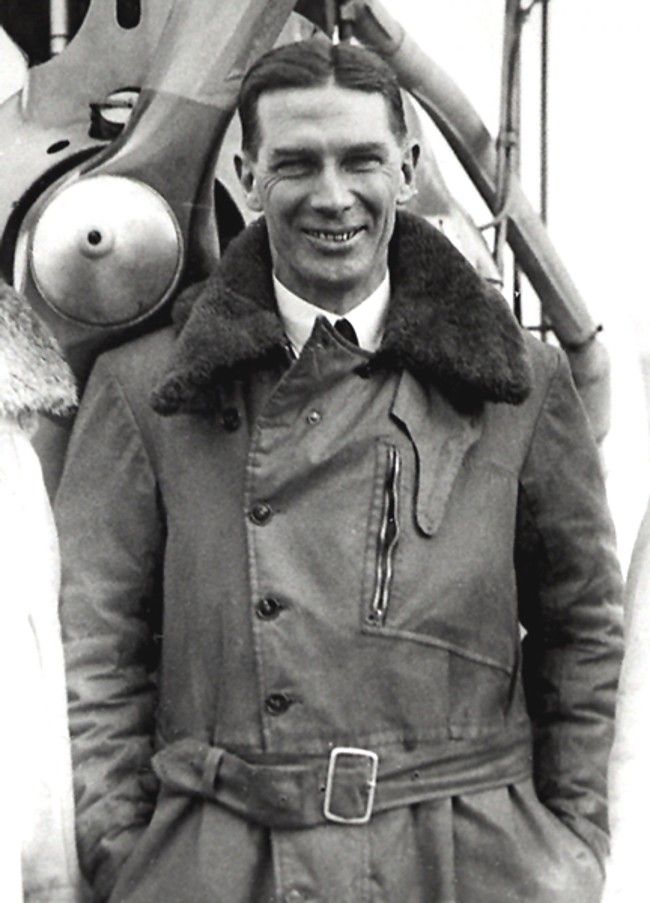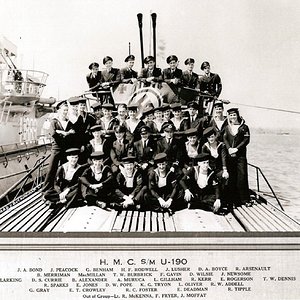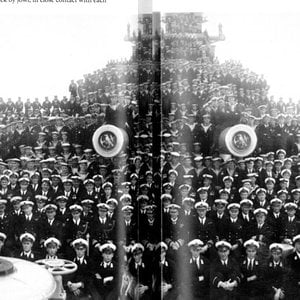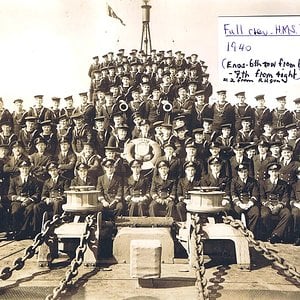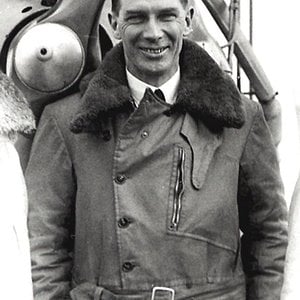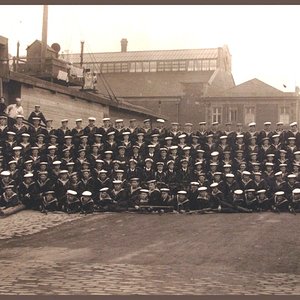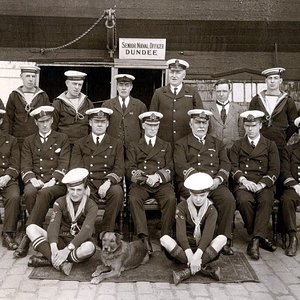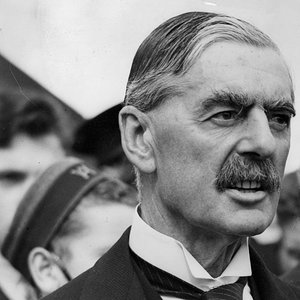Navigation
Install the app
How to install the app on iOS
Follow along with the video below to see how to install our site as a web app on your home screen.
Note: This feature may not be available in some browsers.
More options
You are using an out of date browser. It may not display this or other websites correctly.
You should upgrade or use an alternative browser.
You should upgrade or use an alternative browser.
Captain Valentine Henry Baker MC AFC (24 August 1888 – 12 September 1942) served in all three of the British Armed Forces during the First World War. After the war he became a civilian flight instructor, and co-founder of the Martin-Baker Aircraft Company. He was the father of novelist Denys Val Baker.
Contents
[hide] 1 Military career
2 Civilian life
3 Martin-Baker
4 References
[edit] Military career
Born in Llanfairfechan, Wales, "Bake" (as he was known to his friends[1]) joined the Royal Navy ("for land service") on 27 October 1914, and was immediately rated Petty Officer Mechanic,[2] and assigned to the Royal Naval Air Service Armoured Car Section as a despatch rider.[3] At the time he joined up he was described as being five feet eight and four-fifths inches tall, with a thirty-eight inch chest, "medium brown" hair, blue eyes and a "medium" complexion.[2] Five months later, in the Gallipoli Campaign, he was wounded by a bullet in his neck which lodged near his spinal column. Doctors informed him that any operation to remove it might be fatal, so Baker told them to "leave it alone then", and he lived the remainder of his life with it in his neck.[3]
He was discharged from the RNAS on 31 August 1915,[2] but he returned to military service with the Royal Welch Fusiliers as a temporary second lieutenant in November 1915. The following spring, after his marriage to Dilys Eames, he was posted to the School of Aero Flying and graduated as a pilot in September 1916; he was appointed a Flying Officer in the Military Wing of the Royal Flying Corps and transferred to the General List on 25 September.[4]
Baker was assigned to 41 Squadron, with which he spent his entire nine-month combat flying career, during which time he was reputed to have shot down several German aircraft.[1] He also earned the Military Cross, awarded on 26 July 1917, the citation read:
2nd Lt. Valentine Henry Baker, Gen. List and R.F.C. For conspicuous gallantry and devotion to duty. In a large number of aerial combats he showed the greatest daring and determination. On one occasion, alone, he flew at a low altitude over the enemy lines, attacking and dispersing enemy artillery, infantry, and transport, and returned with a valuable reconnaissance report concerning the retiring enemy.[5]
The RFC decided that his skills as a flying ace would be best used to train new pilots, and in June 1917 he became a flight instructor, teaching at Turnbury, Catterick, and Cramlington. During this period, his son was born, and he was successively promoted to temporary lieutenant, and captain on 27 August 1917.[6]
Baker transferred to the new Royal Air Force on its formation as a merger of the RFC and RNAS on 1 April 1918. He was awarded the Air Force Cross in the 1918 King's Birthday Honours,;[7] the announcement was made the same day that the medal was instituted,[8] and Baker was first in the alphabetically ordered list of recipients;[7] some sources claiming him as the first recipient of the medal.[1] He was assigned to No. 18 Squadron, then sent to Beverley in September 1919 to supervise the closing of the aerodrome there, followed by an assignment to Grantham aerodrome. On 24 October 1919 he was given a regular Short Service Commission in the rank of flight lieutenant.[9] His final job for the military was in the Secret Codes Department, Air Ministry, from May 1920 until he resigned his commission on 1 October 1921, and was permitted to retain the rank of captain
In 1934, Baker left Heston to join his friend James Martin to found the Martin-Baker Aircraft Company, where Baker was the company's test pilot. During a test flight of the Martin-Baker MB 3 prototype, the engine seized and he was forced into an emergency landing, during which the aircraft struck a tree stump and he was killed. Baker's death affected his partner deeply,[14] so much so that pilot safety became Martin's primary focus and led to the reorganisation of the company to focus on ejection seats.[
Contents
[hide] 1 Military career
2 Civilian life
3 Martin-Baker
4 References
[edit] Military career
Born in Llanfairfechan, Wales, "Bake" (as he was known to his friends[1]) joined the Royal Navy ("for land service") on 27 October 1914, and was immediately rated Petty Officer Mechanic,[2] and assigned to the Royal Naval Air Service Armoured Car Section as a despatch rider.[3] At the time he joined up he was described as being five feet eight and four-fifths inches tall, with a thirty-eight inch chest, "medium brown" hair, blue eyes and a "medium" complexion.[2] Five months later, in the Gallipoli Campaign, he was wounded by a bullet in his neck which lodged near his spinal column. Doctors informed him that any operation to remove it might be fatal, so Baker told them to "leave it alone then", and he lived the remainder of his life with it in his neck.[3]
He was discharged from the RNAS on 31 August 1915,[2] but he returned to military service with the Royal Welch Fusiliers as a temporary second lieutenant in November 1915. The following spring, after his marriage to Dilys Eames, he was posted to the School of Aero Flying and graduated as a pilot in September 1916; he was appointed a Flying Officer in the Military Wing of the Royal Flying Corps and transferred to the General List on 25 September.[4]
Baker was assigned to 41 Squadron, with which he spent his entire nine-month combat flying career, during which time he was reputed to have shot down several German aircraft.[1] He also earned the Military Cross, awarded on 26 July 1917, the citation read:
2nd Lt. Valentine Henry Baker, Gen. List and R.F.C. For conspicuous gallantry and devotion to duty. In a large number of aerial combats he showed the greatest daring and determination. On one occasion, alone, he flew at a low altitude over the enemy lines, attacking and dispersing enemy artillery, infantry, and transport, and returned with a valuable reconnaissance report concerning the retiring enemy.[5]
The RFC decided that his skills as a flying ace would be best used to train new pilots, and in June 1917 he became a flight instructor, teaching at Turnbury, Catterick, and Cramlington. During this period, his son was born, and he was successively promoted to temporary lieutenant, and captain on 27 August 1917.[6]
Baker transferred to the new Royal Air Force on its formation as a merger of the RFC and RNAS on 1 April 1918. He was awarded the Air Force Cross in the 1918 King's Birthday Honours,;[7] the announcement was made the same day that the medal was instituted,[8] and Baker was first in the alphabetically ordered list of recipients;[7] some sources claiming him as the first recipient of the medal.[1] He was assigned to No. 18 Squadron, then sent to Beverley in September 1919 to supervise the closing of the aerodrome there, followed by an assignment to Grantham aerodrome. On 24 October 1919 he was given a regular Short Service Commission in the rank of flight lieutenant.[9] His final job for the military was in the Secret Codes Department, Air Ministry, from May 1920 until he resigned his commission on 1 October 1921, and was permitted to retain the rank of captain
In 1934, Baker left Heston to join his friend James Martin to found the Martin-Baker Aircraft Company, where Baker was the company's test pilot. During a test flight of the Martin-Baker MB 3 prototype, the engine seized and he was forced into an emergency landing, during which the aircraft struck a tree stump and he was killed. Baker's death affected his partner deeply,[14] so much so that pilot safety became Martin's primary focus and led to the reorganisation of the company to focus on ejection seats.[

